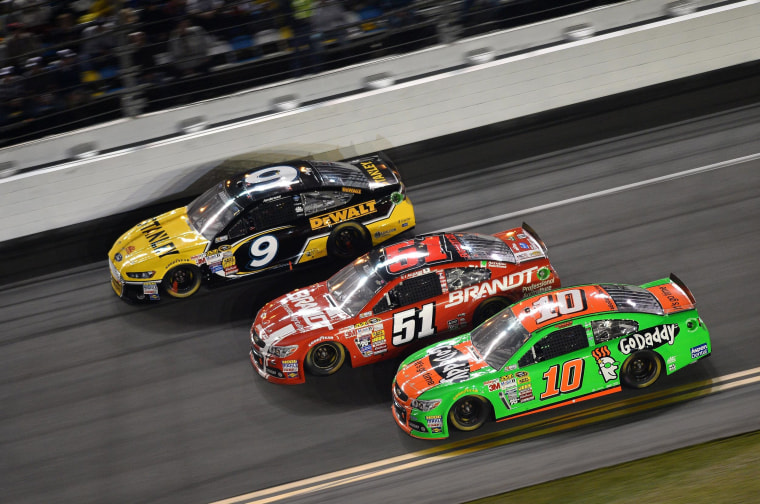/ Source: CNBC.com
It's "all in" for Daytona International Speedway's $400 million renovation.
More than half a million racing fans were in Florida's Daytona Beach region this past week to party and attend Budweiser Speedweeks, a series of NASCAR races culminating in Sunday's soggy season-opening Daytona 500 — billed as the "Great American Race."
Nothing short of a domed stadium would have avoided Sunday's six-hour rain delay or the tornado warning that caused the mid-race evacuation of the grandstands, but in the future, fans will at least have more places to take refuge.
"In the sports world, you're seeing massive investment in infrastructure, specifically new football, baseball and basketball venues. And if you've been to a new arena and then come to a property like ours that's more than 50 years old, there's a stark difference."
Now that NASCAR's biggest and most prestigious race is over, work can resume on the major renovation underway at the sport's most recognizable venue — the Daytona International Speedway, which opened in 1959.
"In the sports world, you're seeing massive investment in infrastructure, specifically new football, baseball and basketball venues," Daytona International Speedway President Joie Chitwood told CNBC. "And if you've been to a new arena and then come to a property like ours that's more than 50 years old, there's a stark difference."
"We decided we'd have to make improvements," said Chitwood. "And instead of Band-aiding this or that, we decided to go all in."
The $400 million, 2½-year project should be finished in 2016.
DAYTONA Rising, as the upgrade project is called, includes the rebuilding of the front stretch of the grandstand, which seats more than 100,000 and runs for nearly a mile along the 2.5-mile tri-oval track.
When complete, there will be five new entrances leading fans into a taller grandstand with three new concourse levels and football field-sized social areas. New amenities will include the speedway's first escalators, 14 new elevators, twice as many restrooms, five dozen luxury track-side suites, more than 101,000 wider, more comfortable grandstand seats and technology for watching the action and telling others about it.
"The younger generation, especially, expects all these things in sports arenas now, and they expect to be able to be totally connected," said Chitwood. "So our goal is to go from being a race track to being a motor sports stadium."
The upgrades also appear to dovetail with some of NASCAR's goals, which include expanding beyond the mostly white, male fan base and appealing to the millennial generation and a more diverse fan base.
"We're investing in a lot of new technology in the sport to attract the new fan and this new facility does that as well with all digital innovations that will be inclusive and encourage more fan engagement," said Brent Dewar, NASCAR's chief operating officer.
The upgrades extend beyond the speedway grounds: The Daytona International Speedway Corp. has partnered with Jacoby Development to build ONE DAYTONA, a $1.2 billion, 181-acre, mixed-used entertainment, dining and retail center across from the speedway that will operate year-round.
"ONE DAYTONA is not 'Speedway Station.' We won't have checkerboard sidewalks," said Brian Leary, managing director of Jacoby Development. "But it will come alive during activities at the track and provide an alternative and option for those attending the events."
Fans who do attend events at the speedway "are a little different than those that attend other sports events," said Leary. "They come earlier, stay later and travel farther to do so," and spend an estimated $1.2 billion in the Daytona community throughout the year.
"I understand there will be a promenade and lots of technological improvements," said Berry Chatas, 45, of Winter Haven, Fla., who attends several NASCAR events at Daytona International Speedway each year with his wife Carol, 44. "But Daytona will always be Daytona and full of race history. The improvements— especially those wider seats—will just make it cooler."
